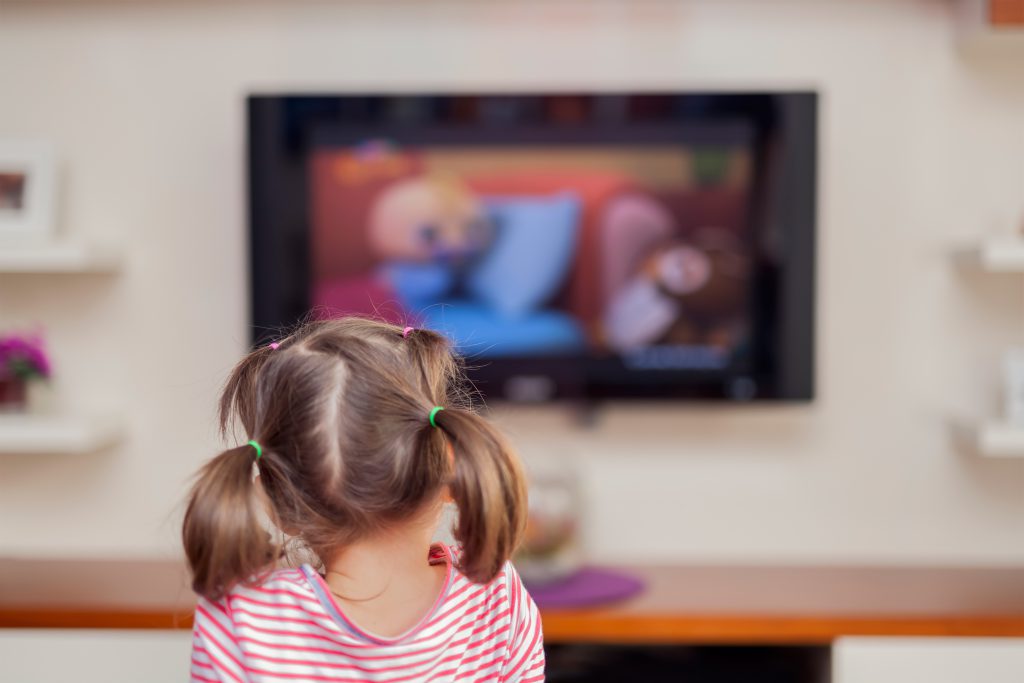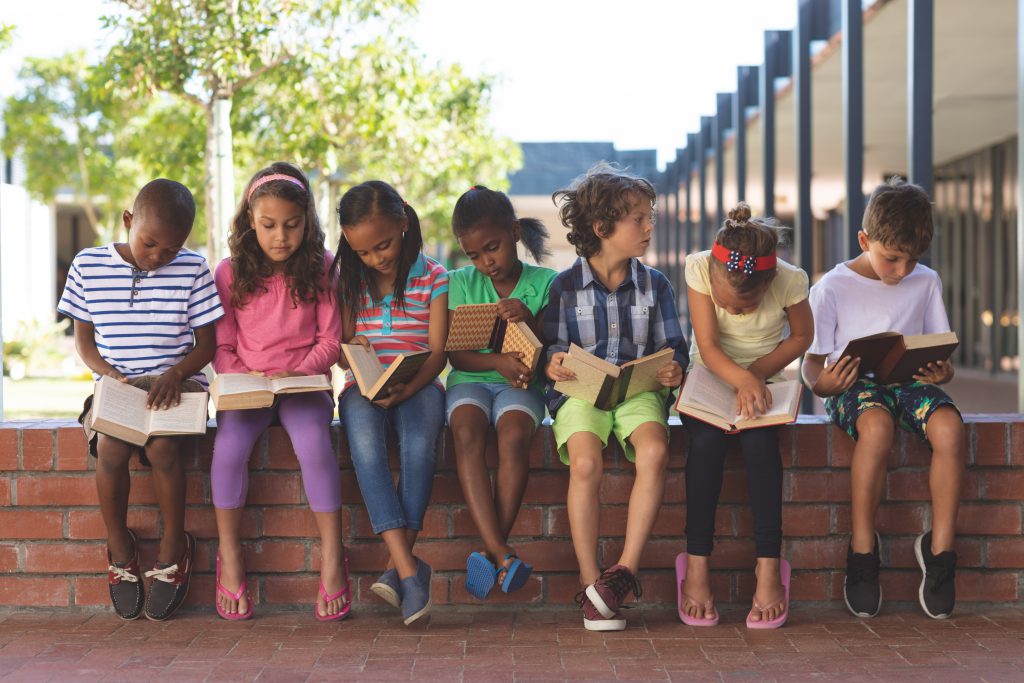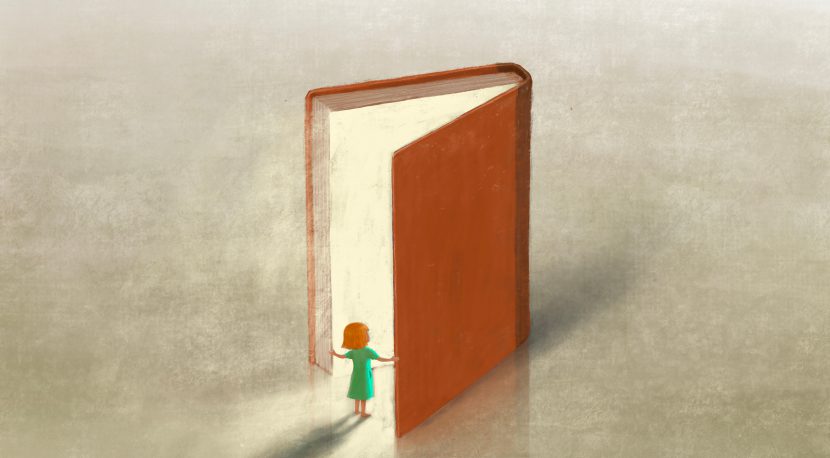Children’s representation is a key issue for child development and growth, and it has taken different forms over time. Children’s literature has played an important role in the discovery of the external and inner world of children, but the lack of representation of some ethnical groups has also represented a big challenge which is still far from being satisfied. In this sense, media have tried to fill the gap, falling into the same stereotypes which affected the literature’s world. Nevertheless, there are some actors who could still promote a shift in culture.
Why children’s representation matters
Children shape their reality according to the models they build with many bricks: stories, songs, films, plays, experiences and many other factors which help them in codifying the reality into common patterns to be reproduced. Through these elements, they discover how the world they live in and themselves, too.
In particular, stories play an important role in children’s representation: they provide information and models, they guide the reader through the discovery of the world, both real and imaginary, and they convey values such as friendship, empathy, courage, sense of belonging, emotions and diversity which are essential for child development and growth.
At the same time, what stories and books taught to children before is now replaced by media content and this is why children’s representation should take into account both aspects: literature and media.
Children’s representation in literature and media plays a significant role in child development and growth because it helps children to understand the reality they live in or to discover other cultures, giving them the opportunity to develop empathy and respect for cultural differences. Children’s representation is important to how kids build their perspectives on their own ethnic-racial group, as well as that of others (Rogers, 2021). In this sense, children’s representation has a double dimension: on one hand, it support the discovery of an external dimension, and on the other, it provides inputs for the discovery of the inner dimension.
But what happens if children don’t find representations about themselves or the reality in which they live?
The consequences of the lack of representation
“Children, especially in the early years, are like little sponges, absorbing all the information around them and then actively making sense of it.”
– Hunter, 2018
In this sense, the lack of representation of the reality in which they live may also affect them in a long-term perspective and under many points of view. For instance, research shows that a lack of representation in media can lead to negative psychological outcomes for those with identities that are underrepresented or negatively portrayed (Tukachinsky, Mastro, &Yarchi, 2017). Exposure to negative media depictions of their own ethnic-racial groups can undermine children’s sense of self, whereas high-quality children’s media can promote positive ethnic-racial attitudes and interactions (Rogers, 2021).
A study on the effects of television on elementary-aged children shows a negative correlation between TV exposure and lower self-esteem for Black girls and boys and White girls, but it also emphasized a positive correlation between TV exposure and higher self-esteem for White boys (Martins & Harrison, 2012).
The same findings are shown by the research that underlined how identifying with popular characters with the same identities in mainstream media leads to higher self-esteem on several dimensions (Ward, 2004). The scientific literature about the effects on children’s well-being supports the importance of realistic, diverse and inclusive representation in children’s media.
Moreover, if children do not perceive themselves as represented by the media or the literature they consume, they may also begin to feel invisible, unimportant (Levinson, 2020) or less important than others. The risks related to this aspect play along with the reaffirmation of a single narrative which is based on stereotypes, and which hinder the possibility for individuals to achieve their goals and dreams on the basis of their personal capacities and aspirations. And if children do not perceive themselves as architects, teachers or engineers they may not perceive these carriers in the future.
If children do not have the possibility to see people with their identities and features being portrayed in a positive way, they may rely on the assumption that their identity is fully represented by those stereotypes which define who they are. The “problems with stereotypes is not the fact they are untrue, but that they are incomplete. They make one story become the only story”. That is what Chimamanda Ngozi Adichie defines by the “danger of a single story” (Adiche, 2019).
The state of art in children’s literature
The affirmation of the importance of children’s representation in literature can be linked to one important milestone which goes back to 1990 when Rudine Sims Bishop codified the “Mirrors, Windows, and Sliding Glass Doors” metaphor in order to describe the role of children’s literature. According to Bishop, window books “[offer] views of worlds that may be real or imagined,” and “are also sliding glass doors, and readers have only to walk through in imagination to become part of whatever world has been created by the author” (1990).
In mirror books, “we can see our own lives and experiences as part of the larger human experience,” which, Bishop argues, is a “means of self-affirmation” (Bishop, 1990). In this sense, children’s literature can represent a mirror for the society, both reflecting the reality we live in and “projecting how we want our children to be” (Dahlen, 2020).
Since then, children’s representation in literature has gained more and more importance and the definition of “representation” has changed over time according to the reality which it was changing, too. For a long time, the children’s literature world has been what Nancy Larrick called “all-white” (Larrick, 2020), but with time, more and more characters representing different ethnicities started to enter the scene of children’s books as a response of the lack of representation.
This was possible thanks to the increase in demand on the part of the consumers, but also thanks to an entire generation of authors who grew up with no reference to such diversity and who wanted to contribute to a shift in culture.
The Cooperative Children’s Book Center (CCBC) at the University of Wisconsin-Madison’s School of Education analysed the percentage of children’s books written by and/or about non-white people from 1985 till today. In the period between 1985 and 2015, the percentage of children’s books written by and/or about non-white people fluctuated between 9 and 14 percent (Dahlen, 2020).
In 2016, the “about” percentage reached 22 percent, but this increase in representation also showed a dark side: as many white authors created more characters of colour and with ambiguous ethnicities, e.g. brown-skinned, they promoted also stereotyped characters which fostered false perceptions about the ethnicities they represented. This aspect was also underlined by the 2016 “by” percentage which amounted to only 13 percent, significantly lower than the 22 percent “about.”
In the period between 2018 and 2020, the percentage of children’s books written by non-white people fluctuated between 23.79 (2018) and 28.56 percent (2020), whereas the “about” percentage fluctuated between 29.64 (2018) and 30.25 percent (2020) (CCBC’s website).
The CCBC statistics show a slow increase in diverse books over the past decade, with more drastic changes in more recent years. According to Lee & Low’s 2018 infographic, the numbers rose from 10 to 14 percent between 2013 and 2014, and then “jumped” to 20 percent in 2015, 28 percent in 2016, and 31 percent in 2017 (Corrie, 2018). These data depict a positive trend which is still far from representing the reality American children live in which half of the country’s children are non-white (Dahlen, 2020).
Lee & Low’s infographics demonstrate that the “diversity gap” is not a problem specific to children’s literature, but to power and media industries generally. Their Lee & Low’s 2018 infographic used the 2017 CCBC data and communicated that only 7 percent, or 288 of 3700 books surveyed, were written by Black, Latinx, and Native writers (Corrie, 2018). In this sense, literature and media have a common element which hinders a truthful representation of the reality that children live which is represented by power.
The role of the media in children’s representation

Media play a key role in the life of children and young people which has increased over time. In 2019, young people spent an average of 2 hours per day watching television shows (Rideout, 2019) and by the Covid-19 pandemic, the use of media contents has increased given its multiple purposes: entertainment, connection, education, creativity and link with the external world (Rideout, 2021).
Given this context, it is important to consider the main effects of such early and constant media exposure in relation to the positive or negative impacts of children’s representation. An important contribution to answering this question is offered by the Cultivation Theory which states that exposure to media helps to shape thoughts, perceptions, and behaviours, and viewers adopt the assumptions and beliefs of media content as reality (Gerbner & Gross, 1976).
Children are particularly vulnerable to media messages and use what they see in media to create their beliefs about themselves and others. Therefore, the media industry holds great power over the socialization and self-concept of young people (Levinson, 2020) and they play a significant role in children’s representation.
An interesting report on North American children’s (up to age 12) television content highlighted the recurrent use of stereotypes and the scarce correspondence to the reality in which children live (Lemish& Johnson, 2019). For instance, 65 percent of characters were white, and female characters were more likely to be non-white or racially ambiguous than male characters. Also, 38 percent of characters were women or girls, while almost 51 percent of the US population is female.
Apart from that, female characters were twice as likely to solve problems using magic while males were more likely to solve problems using science, technology, engineering, and math (STEM) or their physicality (Levinson, 2020). Moreover, only 1 percent of the characters showed signs of physical disability or chronic disease, even if 20 percent of the population lives with a disability (Okoro et al., 2018) and only 2 percent of the characters presented a lower socioeconomic status, whereas about 20 percent of the American children live below the poverty line (NCCP).
The latest report at Common Sense, “The Inclusion Imperative: Why Media Representation Matters for Kids’ Ethnic-Racial Development”, has highlighted the underrepresentation and the stereotyping of people of colour in movies and TV roles(Rogers, 2021). For instance, despite accounting for 18 percent of the population, Latinos only make up 5 percent of speaking film roles. Characters of colour in shows most watched by children between 2 and 13 are more likely to be depicted as violent and women of all ethnic-racial groups in adult programming are more likely to appear in sexualized roles (Rogers, 2021).
According to the perceptions of the parents and caregivers involved in the research, white people are often portrayed in a positive light in the media their children are exposed to, whereas one in four believe that portrayals of Black, Hispanic and LGBTQIA+ people are more likely to be negative (Rogers, 2021).
The above-mentioned studies show how children’s representation in the media does not reflect the reality in which children live but, on the contrary, it promotes a narrative which is based on stereotypes and predefined roles in which children may identify. Once again, the media risk promoting a “Single story” (Adiche, 2019).
Who are the main stakeholders to promote a shift in culture?
Promoting a shift in culture in children’s representation in literature and media is essential in order to fulfil children’s right to “discover and develop their personality, talents and mental and physical abilities to their fullest potential” (Article 29 (1), lett. a) CRC). To achieve this goal, all the actors involved in the life of a child play a significant role.
First of all, publishers and librarians contribute to the cause by selecting which books to print and sell. In this way, they can influence the possible choices that consumers can make. In a globalized and interconnected world, it is easier and easier to have access to different sources of information, but this also depends on the open-mindedness and awareness that these actors have about the importance of children’s representation.
With this respect, also consumers have the power to influence what the market offers them, both in terms of books and media content. In particular, parents are more and more attentive to the content their children consume and they ask media creators to deliver content that better reflects the diversity of the world in which their kids are growing up (Rogers, 2021).
In this sense, also authors and creators have the power to influence the contents they produce in order to better represent the reality in which children live and to inspire them thanks to their privileged role. They provide “windows” (Bishop, 1990) to the external world and they guide children to the discovery of the world and themselves, too.
Last but not least, children are the key actors to promote a shift in culture which is more representative of the reality in which they live and more respectful of their identities, needs, thoughts and aspirations. The best way to achieve this goal is to start talking about their stories and to include themselves in the stories they imagine, because each single story is important and needs to be told.

Humanium is at the forefront in supporting the diversity and inclusiveness of all children all in order to make their voices heard. We advocate for a world where children’s rights are respected and protected, and we work to assure that children of all backgrounds, genders and ethnicities are represented by the media and the literature equally! Discover how to stand up for children’s rights, join our community, interact with our work, and share our mission through our website, Facebook page or newsletter!
Written by Arianna Braga [1]
For More Information:
Books by and/or about Black, Indigenous and People of Color (All Years)
References:
Adichie, C. (July, 2019). The danger of a single story. Retrieved from https://www.ted.com/talks/chimamanda_ngozi_adichie_the_danger_of_a_single_story?language=en, accessed on 16 February 2022.
Convention on the rights of the child (1989) Treaty no. 27531. United Nations Treaty Series, 1577, pp. 3-178. Retrieved from https://treaties.un.org/doc/Treaties/1990/09/19900902%2003-14%20AM/Ch_IV_11p.pdf, accessed on 16 February 2022.
Corrie, J. (10 May, 2018). The Diversity Gap in Children’s Book Publishing, 2018. Retrieved from https://blog.leeandlow.com/2018/05/10/the-diversity-gap-in-childrens-book-publishing-2018/, accessed on 15 February 2022.
Dahlen S.P. (2020). “We Need Diverse Books”: Diversity, Activism, and Children’s Literature. In: op de Beeck N. (eds) Literary Cultures and Twenty-First-Century Childhoods. Literary Cultures and Childhoods. Palgrave Macmillan, Cham. Retrieved from https://doi.org/10.1007/978-3-030-32146-8_5, accessed on 16 February 2022.
Gerbner, G., Gross, L., (June, 1976). Living with Television: The Violence Profile, Journal of Communication, Volume 26, Issue 2, June 1976, Pages 172–199. Retrieved from https://doi.org/10.1111/j.1460-2466.1976.tb01397.x, accessed on 17 February 2022.
Hunter, E. (January 18, 2018). Children are like little sponges’: early learning can set them up for life. Retrieved from https://theirworld.org/news/early-learning-sets-up-young-children-for-life, accessed on 16 February 2022.
Huyck, D., Park Dahlen, S., Griffin, M. B. (September 14, 2016). Diversity in Children’s Books 2015 infographic. Retrieved from https://readingspark.wordpress.com/2016/09/14/picture-this-reflecting-diversity-in-childrens-book-publishing/
Huyck, D., Park Dahlen. (June 19, 2019). Diversity in Children’s Books 2018. Created in consultation with Edith Campbell, Molly Beth Griffin, K. T. Horning, Debbie Reese, Ebony Elizabeth Thomas, and Madeline Tyner. Retrieved from https://readingspark.wordpress.com/2019/06/19/picture-this-diversity-in-childrens-books-2018-infographic/, accessed on 15 February 2022.
Larrick, N. (1965). The All-White World of Children’s Books. Retrieved from https://brichislitspot.files.wordpress.com/2017/08/384larrick.pdf, accessed on 15 February 2022.
Levinson, J. (March 5, 202). Why Diversity in Children’s Media is So Important. Retrieved from https://www.psychologyinaction.org/psychology-in-action-1/2020/3/5/why-diversity-in-childrens-media-is-so-important, accessed on 16 February 2022.
Martins, N., & Harrison, K. (2012). Racial and Gender Differences in the Relationship Between Children’s Television Use and Self-Esteem. Communication Research, 39(3), 338–357. https://doi.org/10.1177/0093650211401376, accessed on 16 February 2022.
NCCP | Child Poverty. (2019). Retrieved February 28, 2020, from http://www.nccp.org/topics/childpoverty.html, accessed on 16 February 2022.
Okoro, C. A., Hollis, N. D., Cyrus, A. C., & Griffin-Blake, S. (2018). Prevalence of Disabilities and Health Care Access by Disability Status and Type Among Adults — United States, 2016. MMWR. Morbidity and Mortality Weekly Report, 67(32), 882–887. Retrieved from https://doi.org/10.15585/mmwr.mm6732a3, accessed on 16 February 2022.
Rideout, V., and Robb, M. B. (2019). The Common Sense census: Media use by tweens and teens, 2019. San Francisco, CA: Common Sense Media.
Rideout, V. and Robb, M. B. (2021). The role of media during the pandemic: Connection, creativity, and learning for tweens and teens. San Francisco, CA: Common Sense.
Rogers, O. (October 20, 2021). Why Representation Matters in Kids’ Media [Blog Post]. Retrieved from https://www.commonsensemedia.org/kids-action/blog/why-representation-matters-in-kids-media#, accessed on 16 February 2022.
Rogers, O., Mastro, D., Robb, M. B., & Peebles, A. (2021). The Inclusion Imperative: Why Media Representation Matters for Kids’ Ethnic-Racial Development. San Francisco, CA: Common Sense
Sims Bishop, R. (1990). “Mirrors, Windows, and Sliding Glass Doors.” Perspectives: Choosing and Using Books for the Classroom, vol. 6, no. 3, 1990 summer.
Statistics compiled by the Cooperative Children’s Book Center, School of Education, University of Wisconsin-Madison: https://ccbc.education.wisc.edu/literature-resources/ccbc-diversity-statistics/books-by-about-poc-fnn/, accessed on 15 February 2022.
Tukachinsky, R., Mastro, D., &Yarchi, M. (2017). The Effect of Prime Time Television Ethnic/Racial Stereotypes on Latino and Black Americans: A Longitudinal National Level Study. Journal of Broadcasting & Electronic Media, 61(3), 538–556. https://doi.org/10.1080/08838151.2017.1344669, accessed on 16 February 2022.
[1] I would also thank Professor Sarah Park Dahlen for her valuable insights and comments on the topic which enriched this article.


